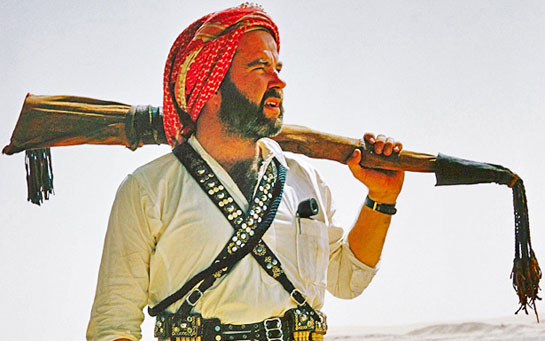
Photographer Tom Abercrombie in an undated photo from National Geographic.
If a picture is worth a thousand words, seasoned photographer Lynn Abercrombie could fill a book. And that’s exactly what she did.
Lynn Abercrombie presented her book entitled “Traveling the World for National Geographic” on March 23rd at the National Press Club.
The book chronicles the decades her and her husband Tom Abercrombie, who worked for National Geographic and lived in Maryland, traveled the world and captured the nuances of the culture and people they encountered.
It allows the readers a unique and intimate glimpse into the lives of two companions whose lenses refocused their worldview and provided a glimpse into the most frigid corners of the globe.
While Lynn is a institution in her own right, her husband Tom, who died in 2006 at 75 years old, carved out a legacy with the renowned magazine, most notably introducing its readers to the Muslim world in ways they had never been introduced before.
Tom Abercrombie spent 38 years with National Geographic beginning in 1956 and traveled to Japan, Cambodia, Tibet and Venezuela, Spain, Australia, Alaska and Brazil. Abercrombie is even credited as being the first civilian correspondent to ever document the South Pole.
In a 1991 article published in National Geographic, Abercrombie recounted the year he spent traveling in the footsteps of famed 14th-century Arab explorer Ibn Battuta. The article titled “Ibn Battuta: Prince of Travelers” escorts the reader through 35 countries from Morocco to China.
Still, his most notable work is considered to be his documentation of the Muslim world throughout his career with the magazine. He produced 16 articles on the religion and captured images of the Muslim pilgrimage, allowing the non-Muslim world a glimpse at what is considered one of the most coveted acts in Islam.
Abercrombie converted to Islam in 1964 after his time spent in the Muslim world. Through the scope of a lense, Abercrombie captured more than images, but a way of life that moved him to redefine his own. He remained extremely private about his conversion to Islam but once described his article and photographs for “The Sword and The Sermon” as his proudest professional work. The article journeys through the history and culture of the Islamic world. While working on the piece he attended Friday prayers in a mosque in Kazakhstan. He wrote in a letter home that it was among the most emotional moments of his life.
Abercrombie’s adventures have been described as Hemingway-esque, but perhaps a little more perilous. He faced 100 degree below zero weather in the South Pole where he was stranded for weeks after an assignment. Later he dangled over a gaping chasm in a mountain pass in Afghanistan from the stirrup of a horse.
Not merely a photographer and journalist, Abercrombie was also a connoisseur of language, fluent in German, English, French, Spanish and Arabic.
He befriended many who he met on his travels, from farmers to kings and is even known to have become friends with the Saudi royal family. Abercrombie effectively became National Geographic’s expert on the Arab world.
Alongside his social accolades, he was a distinguished professional, having received the award for newspaper photographer of the year in 1954 for his contributions to the Milwaukee Journal and in 1959 was awarded magazine photographer of the year for his work at National Geographic, making him the first person to win both of the prestigious awards.
After his retirement in 1993, Abercrombie taught geography at George Washington University.
In the year before his death Abercrombie recounted the breadth of his career. His lens not only captured a different place on a map in a different time in history, but a different world entirely.
“Much of that world has changed since our days in the field—not always for the better. Many of the smiles we captured are no more—bleached by tourism, stricken with war, and battered by revolution. Multi-faith Lebanon is torn by sectarian anger; Saudi Arabia is constrained more than ever, as a government of wealthy princes faces off against its more fanatic citizens; Cambodia struggles to rid itself of a decade-long nightmare; Afghanistan bleeds from foreign invasions and its own medieval fundamentalists; Iran remains at loggerhead with the West; and Iraq lies in ashes. So, in a sense, my work records history as much as geography. As has often been said: The past is another country.”









Comments powered by CComment